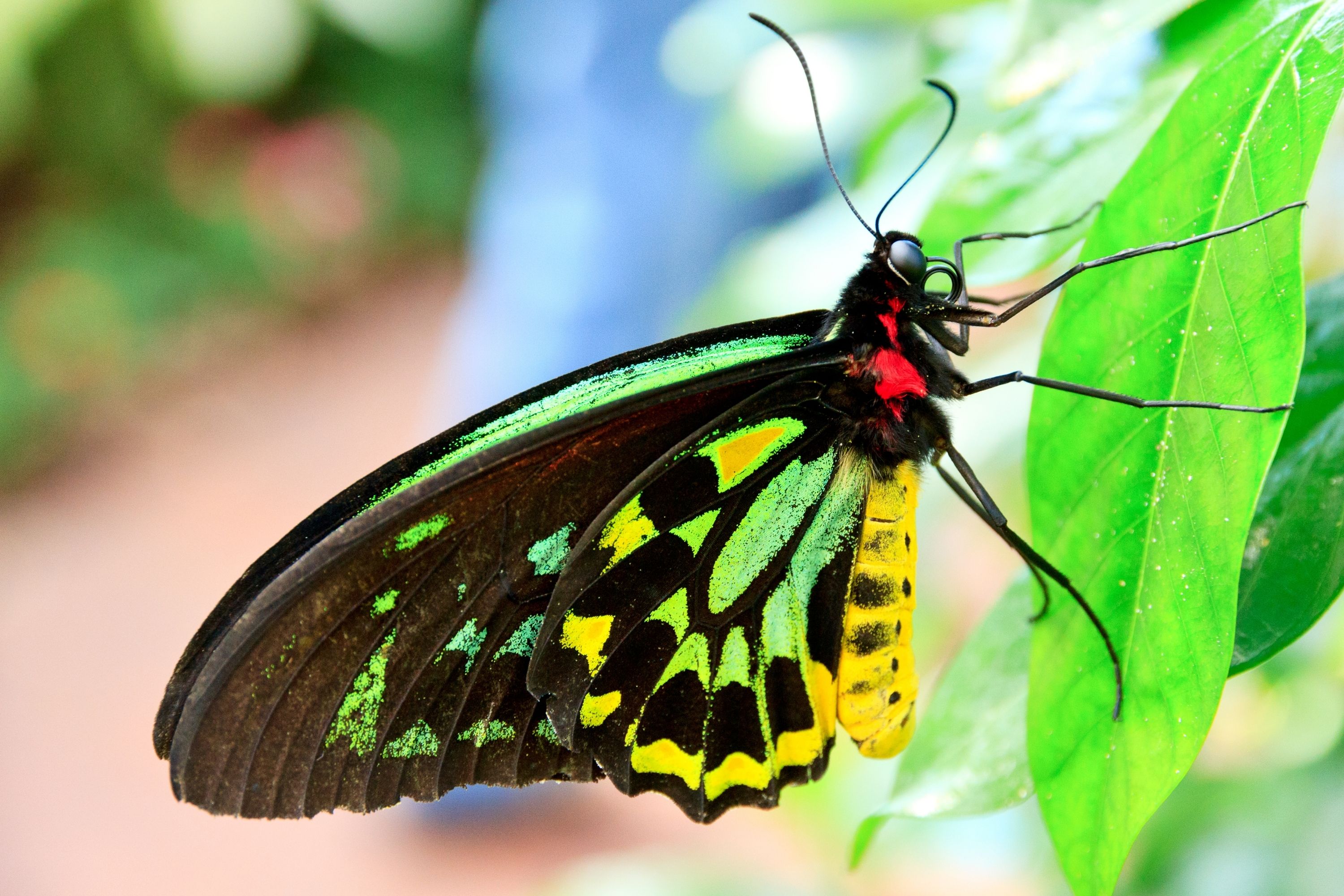Queen Alexandra's birdwing
(Ornithoptera alexandrae)

Description
Ornithoptera alexandrae, the Queen Alexandra's birdwing, is the largest species of butterfly in the world, with females reaching wingspans slightly in excess of 25 cm to 28 cm (9.8 inches to 11 inches). This birdwing is restricted to the forests of the Oro Province in eastern Papua New Guinea. The species is endangered and one of only three insects (the other two being butterflies as well) to be listed on Appendix I of CITES, making commercial international trade illegal. The species was discovered in 1906 by Albert Stewart Meek, a collector employed by Walter Rothschild to collect natural history specimens from New Guinea. In the next year, Rothschild named the species in honour of Alexandra of Denmark. Although the first specimen was taken with the aid of a small shotgun, Meek soon discovered the early stages and bred out most of the first specimens. Though most authorities now classify this species in the genus Ornithoptera, it has formerly been placed in the genus Troides or the now defunct genus Aethoptera. In 2001 the lepidopterist Gilles Deslisle proposed placing it in its own subgenus (which some writers have treated as a genus); he originally proposed the name Zeunera, but this is a junior homonym (with Zeunera Piton 1936), and his replacement is Straatmana. For explanation of terms, see External morphology of Lepidoptera. Female: Female Queen Alexandra's birdwings are larger than males with markedly rounder, broader wings. The female can reach, and slightly exceed, a wingspan of 25 cm to 28 cm (9.8 inches to 11 inches), a body length of 8 cm (3.1 in) and a body mass of up to 12 g (0.42 oz), all enormous measurements for a butterfly. The female has brown wings with white markings arranged as two rows of chevrons. The hindwings are brown with a submarginal line of centred yellow triangles. The body is cream coloured and there is a small section of red fur on the brown thorax. Male: There is sexual dimorphism in this species. The wings are long with angular apices. They are iridescent bluish green with a black central band. There is a pronounced sex brand. The underside is green or blue green with black veins. Males are smaller than females. The abdomen is bright yellow. The wingspan of the males can be approximately 20 cm (8 in), but more usually about 16 cm (6.3 in). A spectacular form of the male is form atavus, which has gold spots on the hindwings.
Taxonomic tree:







